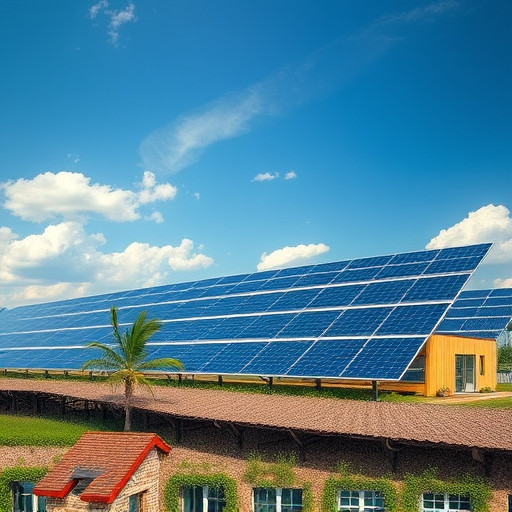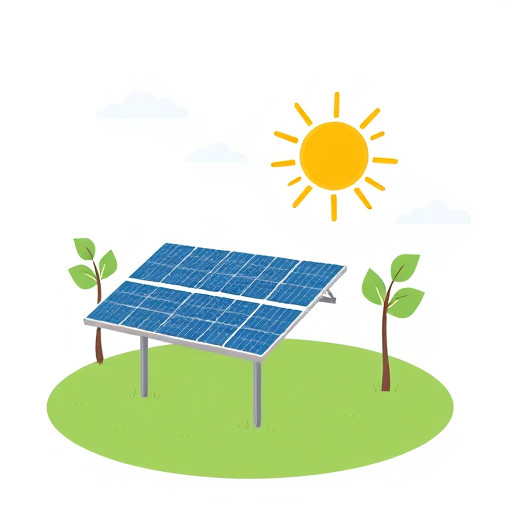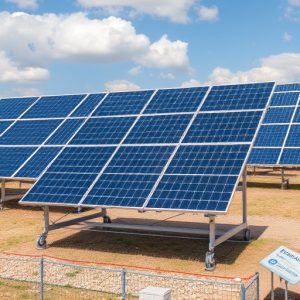Community solar programs democratize access to Solar Energy, allowing residents and businesses to collectively invest in shared farms, reducing costs for all participants, especially low-income households with limited rooftop space. These initiatives foster environmental stewardship by spreading the benefits of clean, renewable power and contributing to a more resilient energy grid. By embracing solar energy collaboratively, communities can advance global sustainability goals and strengthen local bonds while transitioning towards a greener future.
Community solar programs are transforming the way we access clean, renewable energy. This collaborative approach allows residents to benefit from shared solar installations, regardless of individual rooftop constraints. In this article, we explore how these initiatives work and the multifaceted advantages they offer. From environmental sustainability to economic benefits and community empowerment, community-owned solar projects are paving the way for a greener future, ensuring access to solar energy for all.
- Understanding Community Solar Programs: How They Work and Benefits for Residents
- The Environmental Impact and Economic Advantages of Community-Owned Solar Initiatives
- Empowering Communities: Increasing Access to Clean Energy and Fostering Collaboration
Understanding Community Solar Programs: How They Work and Benefits for Residents

Community solar programs are a innovative way to bring the benefits of solar energy to residents who may not have the means or space to install their own solar panels. These programs allow individuals and businesses to invest in a shared solar farm, which generates clean and renewable electricity for all participants. By pooling resources, communities can access discounted rates on solar power and contribute to a more sustainable future.
Each resident or business in a community solar program benefits from the collective purchasing power of the group. They pay a monthly fee that covers their share of the solar farm’s production, which is then credited to their electricity bills. This model makes solar energy accessible to a broader range of people, particularly low-income households and those living in apartments or areas with limited rooftop space for solar panels. Additionally, community solar initiatives foster a sense of collective responsibility for environmental stewardship, as residents share not only costs but also the positive impact on the environment from reduced carbon emissions.
The Environmental Impact and Economic Advantages of Community-Owned Solar Initiatives

Community solar programs, where locally owned and managed solar energy initiatives provide access to clean power for nearby residents, have garnered significant attention due to their vast environmental and economic benefits. By fostering a collective approach to adopting solar energy, these programs minimize the carbon footprint of the entire community. Traditional solar installations often require substantial upfront costs, making it less accessible for low-income households or individuals who prefer not to invest heavily in their energy systems. Community-owned solar initiatives democratize access to renewable energy by allowing participants to pool resources and share the financial burden, making clean power more affordable for all.
Moreover, these projects contribute to a resilient and sustainable energy grid. When communities collectively generate and consume local Solar Energy, they reduce dependence on fossil fuels and lower overall energy costs. This not only ensures a cleaner environment but also fosters economic growth by potentially reducing electricity bills for participants, freeing up funds that can be reinvested in local businesses or essential services. The collective impact of these initiatives has the potential to significantly contribute to global sustainability goals, demonstrating the power of community-driven solutions in transitioning towards a greener future.
Empowering Communities: Increasing Access to Clean Energy and Fostering Collaboration

Community solar programs are transforming the way we access and share one of our most valuable resources: solar energy. By enabling residents to invest in collective solar installations, these programs empower communities to take control of their energy needs. This collaborative approach not only increases access to clean, renewable energy but also fosters a sense of shared responsibility and ownership.
Through community solar, neighbors can come together to install solar panels on shared spaces like rooftops or open land. This collective effort reduces the upfront cost for individual participants, making solar energy more accessible to a broader range of users. Moreover, it encourages local collaboration, strengthens community bonds, and promotes environmental stewardship, ensuring that everyone benefits from the clean energy produced.
Community solar programs represent a powerful tool for democratizing access to clean energy, fostering environmental stewardship, and strengthening local communities. By pooling resources and sharing benefits, residents can harness the power of solar energy while reducing their carbon footprint and saving on utility costs. These initiatives not only promote sustainability but also empower communities to take control of their energy future, creating a brighter and more resilient environment for all.
